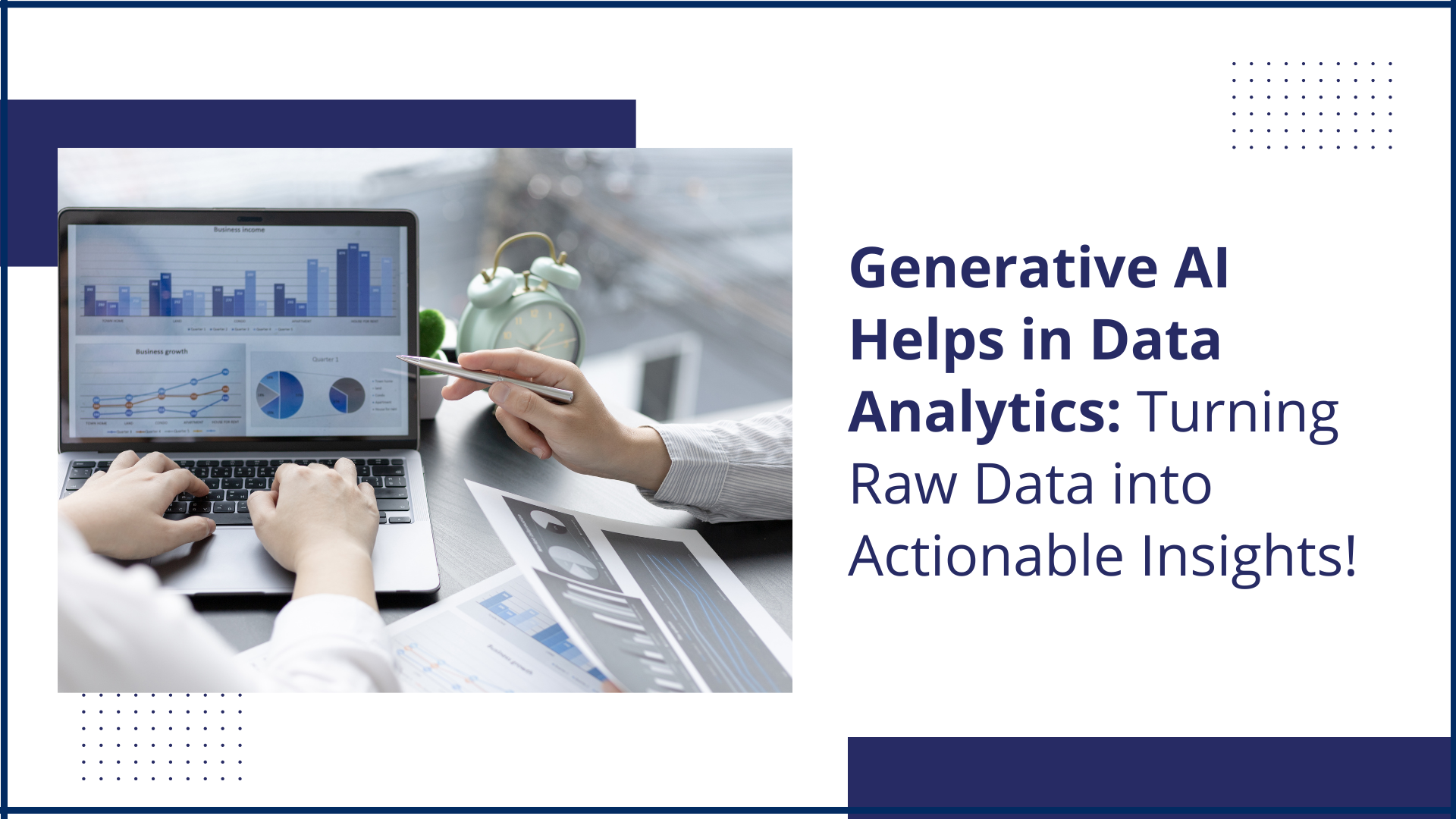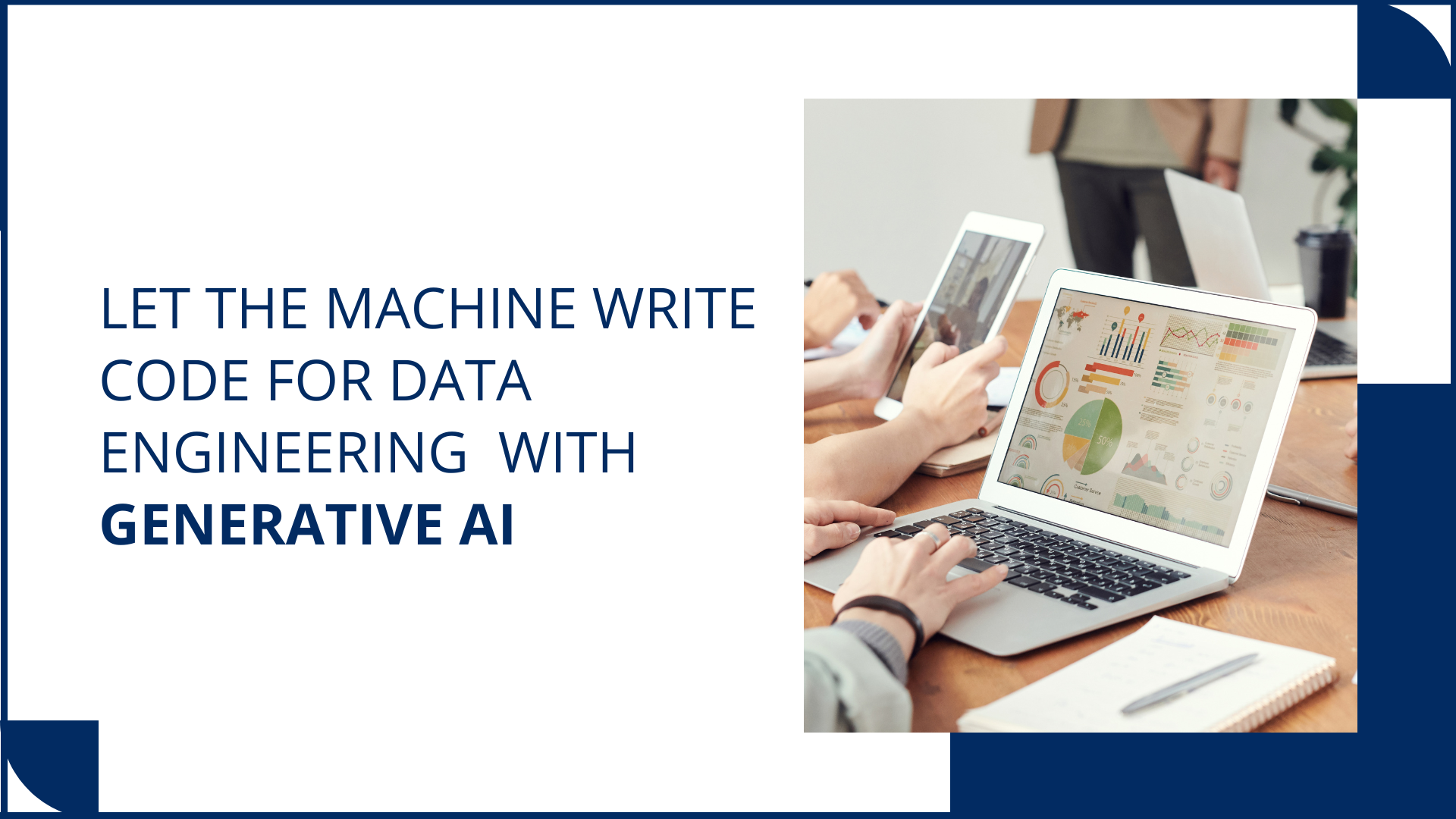- Home
- Generative AI
- How Generative AI Helps in Dat ...

Table of Contents
Introduction
In a world of analytics where data is wealth, and the process of extracting insights from data has traditionally been a complex and time-consuming process, businesses have been completely dependent on software developers for a long time to bridge the gap between raw data and meaningful insights.
This often involves a series of back-and-forths, where business users have to extend their analytics needs to development teams, who then create Data pipelines or write SQL queries, or develop database APIs to make them ready for data analysis
After this lengthy process, the Development teams write code for the generation of Data Insights and the results are then presented to the Business Users for validation. If decision-makers or even Business Users ask for deeper insights the process starts again from the very beginning.
This Analysis cycle has continued for decades, even with the rapidly growing billion-dollar business intelligence (BI) market.
Generative AI as a Solution
The dependency of Business Users to Developers for Data Insights can be a bottleneck in the analytics process. It often leads to misunderstandings and waste of time. However, this cumbersome process may soon become a relic of the past due to the emergence of Generative AI.
What actually is Generative AI?
Generative AI, in its simplest form, is artificial intelligence that can generate the code for ETL process, write the SQL/API to get the Data from Databases, and Design the chart just by taking inputs in Plain English.

Imagine a world where Business Users can communicate their analytical needs directly to a machine using plain English, and that machine can autonomously write SQL queries, create database APIs, and even design data visualizations.
If this sounds like science fiction, then please think again – it’s a game-changer that’s already making big changes in the world of data analytics.
Let us find out how Generative AI is set to revolutionize data analytics projects:
Automated Code Generation with Generative AI
The most important advantage of generative AI is the ability to write code. By understanding the Business User’s natural language input, generative AI can automatically execute SQL queries or create API endpoints for data retrieval. This eliminates the need for developers to enter these requests manually, saving time and reducing the risk of errors.
Easy-to-use interface
Generative AI can create dashboards and charts for analytics needs. This means that business users will no longer have to rely on developers to create dashboards for data visualization. Generative AI will take user input and design charts that present data in a way that makes sense to business users.
Generative AI Eliminates technical jargon
Business users often don’t want to listen to technical jargon or care about database technology, whether it’s Oracle, MongoDB, or Elasticsearch. Generative AI eliminates this technology gap, allowing business users to focus solely on their business needs. It bridges the gap between technical and non-technical users.
Generative AI works as a connection, between the business requirements and the technical process of data analytics. This empowers Business Users to take on a streamlined role, in shaping their analytical projects. Rather than relying on developers for technical expertise, now Business Users can directly engage with their Data that comprehends their objectives and effectively carry out their insights.
Furthermore, the potential for cost and time saving is enormous. By reducing the dependence on developers for Data Analysis Processes, Generative AI allows Business Users to allocate their time toward more strategic decision-making. At the time business units can effortlessly obtain the data-driven insights they require.
Conclusion
In conclusion, Generative AI has the potential to change the data analysis landscape by enabling machines to write the code for the process of Data Analytics. It also eliminates the need for technical expertise. As this technology continues to evolve, the possibilities for innovation in data analytics are limitless, and companies can greatly benefit from its adoption.

Apoorva is a passionate and driven individual who accidentally found her interest in Business Intelligence and Data Analysis while studying Travel and Tourism. Despite her first love for being Content Writer and Blogger, she now creates compelling content on NLP-driven decision-making and a No-Code Data Platform that influences businesses. Her commitment to making Data accessible and Democratized for everyone has led her to work with NewFangled Vision on NLP-based Conversational Driven Data Analysis.
Category
- Case Study
- CRM GenAI
- Customer Sentiment Quester
- Data Analytics
- Data Democratization
- Data Security
- Decision Enabler Platform
- Enterprise GenAI
- Excel Sheet Analytics
- Finance Modelling
- GenAI for manufacturing
- Generative AI
- Generative BI
- Log Analytics
- Media Analytics
- NewFangled
- NewFangled AI Architecture
- NewFangled VADY
- Newfangled Vision
- No-Code BI
- No-Code ETL
- PolusAI
- POS GenAI
- Real Estate Anlaytics
- Real-Time Data Analytics
- Research
- Self-Service Analytics
- Stream Analytics
- Uncategorized
- VADY

